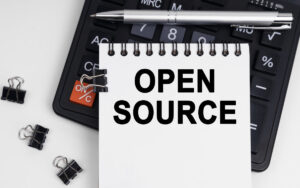Project management is more than hitting deadlines, staying on budget, or completing tasks. It is also about working with people. These people, known as stakeholders, are vital to the success of any project. But who are they, and why do they matter?
In this article, we will dive into the role of a stakeholder in project management. You will learn who they are, the various types you will come across, and why they are essential to project success. Whether you’re new to the field or looking to deepen your knowledge, this guide will give you a solid understanding of managing stakeholders.
If you are serious about leveling up your skills, consider enrolling in our online project management program to build a strong foundation. We’ll give you more details about that as we go along.
Ready to explore stakeholder management in project management? Let’s get started!
What is the Meaning of Stakeholders in Project Management?
In project management, stakeholders are anyone with a stake in the project and can impact its success or failure. They can be involved in the project or affected by its result.
Moreover, these people are crucial to the success of your project as they offer valuable insights, resources, and support. However, if you overlook their needs, you can face conflicts, delays, or failure. That is why understanding who your stakeholders are and what they need is essential for success.
Also Read: What is a Feasibility Study?
Stakeholder Examples You Need to Know for Your Project
When managing a project, you’ll come across different types of stakeholders, each with their unique role. Here are some key examples of stakeholders in project management that you should know:
- Project Sponsors: These are usually high-level managers or executives who provide the funds, support, and resources needed for the project.
- Project Investors: These people provide financial backing for projects and are usually looking for a return on their investment.
- Project Manager: They oversee the entire project from start to finish. They make critical decisions and ensure that the project stays on track. Their role involves managing both the team and other stakeholders.
- Project Team: This group is the heart of the project. They do the work needed to complete the project and include everyone involved in the project tasks.
- Customers: They will use or enjoy the finished product or service.
- Clients: They will gain from the project outcomes. Keeping them happy is vital because they are the people who can greenlight your success or pull the plug if things go south.
- Vendors and Suppliers: They provide the materials, resources, tools, or services needed for the project.
- Government and Regulatory Bodies: They check whether the project follows all the laws and rules and issue the permits needed to proceed with specific projects.
- Community Members: When a project affects a local area, like construction or environmental work, the local community becomes an essential stakeholder in project management. Their support is critical, especially if your project impacts their surroundings or daily life.
Remember, these examples are the tip of the iceberg. Every project has a unique set of stakeholders. To understand their impact, you must dig deeper and find the people who will invest in your project’s success.
For example, imagine building a new smartphone app. Your stakeholders could range from your development team to the end-user who downloads the app. It can also involve stakeholders like the marketing and sales teams, an advertising agency, and tech influencers to promote the app.
What are the Two Types of Stakeholders?
Now that we know who can be a stakeholder in project management- let us dig into two main groups to understand them better:
- Internal Stakeholders: These are the people who work within your organization. They could be senior managers, the project team, the project manager, your co-workers, or even a resource manager.
- External Stakeholders are individuals or groups that are not part of your organization but are still affected by the project. They might include customers, government agencies, the community, investors, vendors, and suppliers.
Understanding these categories is crucial for effective stakeholder management in project management.
But remember: While these are common categories, every project has its unique mix of stakeholders. It is vital to find out who is involved in your project and understand their influence.
Also Read: Project Management Documentation
Internal vs. External Stakeholders
| Aspect | Internal Stakeholders | External Stakeholders |
| Definition | People within the organization are involved in the project. | People outside the organization who are affected by the project. |
| Examples | Employees, human resources, finance department, managers, team members, etc. | Clients, customers, the general public, suppliers, and regulatory bodies. |
| Role | Involved in executing and managing the project. | Affected by the project’s outcome but not involved in its execution. |
| Influence | Can affect project outcomes through their work and decisions. | Influence project success through their requirements and feedback. |
| Communication | Often requires regular updates and collaboration. | Requires clear, concise communication and updates. |
| Motivation | Driven by organizational goals, personal growth, and job satisfaction. | Driven by project results, service quality, and contract fulfillment. |
Who are the Key Stakeholders in a Project?
Key stakeholders are the people who have the most say in how a project turns out. They can affect the project through their support, resources, or decisions.
But remember, while all stakeholders play a role, key stakeholders stand out because of their strong influence on the project.
Some of the most common key stakeholders usually include:
- Project Sponsor
- Project Manager
- Clients or Customers
- Project Team Members
Also Read: Exploring the Role of a Scrum Master in Project Management
What are the Roles and Responsibilities of Key Stakeholders?
Let’s break down the roles and responsibilities of each stakeholder in project management:
Project Sponsor
The project sponsor is like the project’s champion. This person provides the funds and resources needed for the project. They decide what the project should achieve and how to get there. The Sponsor also makes important decisions and provides guidance to the project manager. They make sure the project fits well with their organization’s goals and communicate its importance to senior managers.
Project Manager
The project manager is the person who leads the project from start to finish. They create a detailed plan, manage the project team, and keep other stakeholders updated. They handle any risks or issues and ensure the project stays on schedule, within budget, and meets its goals.
Core Project Team
The core project team completes the crucial tasks for achieving the project’s goals. Team members collaborate, help with planning, and provide feedback on important decisions. They report challenges and risks to the project manager and use their skills to solve problems and improve the project’s outcome.
Clients
Clients decide what the project should deliver. They share their needs and expectations with the project team, review what’s been done, and provide feedback. Clients ensure that the final product or service meets their needs and approve the work at different stages of the project.
Customers
Customers are the people who will use or buy the project’s deliverables. They give feedback on the final product or service, test it out, and then use it once it’s ready. Their feedback helps ensure the project meets their needs and expectations.
Stakeholders vs. Key Project Stakeholders
A stakeholder in project management is anyone with a stake in a project. This term covers a broad range of people and groups, inside and outside the organization. Stakeholders can be employees, customers, investors, government agencies, or even the general public. In other words, if someone is affected by or can affect the project, they are a stakeholder.
However, key project stakeholders are a specific group within the larger stakeholder group. These people have a major influence on the project’s success. They could be in important positions within the organization or might have a significant financial interest in the project. They have the power to provide resources, make crucial decisions, or significantly affect the project’s outcome.
In summary, all key project stakeholders are stakeholders, but not all stakeholders are key project stakeholders.
Also Read: AI for Project Management: Creating More Efficiency, Accuracy, and Better Results
How to Manage Project Stakeholders
A good stakeholder management plan includes strategies for how you’ll communicate and interact with different people throughout the project. Here are the main steps involved:
- Identify and Analyze Stakeholders
- Find everyone who might be affected by the project or can influence it.
- Understand what each stakeholder wants and expects. See how much power they have over the project.
- Group stakeholders based on how involved they are and how much impact they can have.
- Create a Communication Plan
- Make a plan for how you’ll communicate with different stakeholders.
- Decide how often you’ll update them and which communication channels you’ll use.
- Tailor your messages to fit each stakeholder’s needs and preferences.
- Build Relationships
- Build trust and a good relationship with key stakeholders.
- Listen to their concerns and feedback.
- Keep them informed with regular updates on how the project is progressing.
- Manage Expectations
- Explain the project’s goals, timelines, and what you plan to deliver.
- Set realistic expectations and keep managing them as the project goes on.
- Address any concerns or issues that stakeholders bring up.
- Track and Control
- Keep track of how engaged and satisfied stakeholders are.
- Identify any potential problems and fix them right away.
- Update and improve your stakeholder management plan.
Here are some simple stakeholder management examples to help you understand how the plan works:
- Host Regular Stakeholder Meetings: These meetings let your stakeholders share their thoughts and feedback.
- Get Feedback: Use focus groups or surveys to see what your stakeholders think and how they feel.
- Create a Stakeholder Map: This visual chart shows your stakeholders and their connections. It helps you decide who to engage with more.
- Project Status Updates: Keep stakeholders up-to-date with how the project is going and any changes that might happen.
In these stakeholder management examples, clear communication and regular updates are vital to build better relationships and ensure project success.
What is the Importance of Stakeholder Management?
Effective stakeholder management is essential if you want your project to succeed. Here is why:
- Keeps Everyone on the Same Page: Talking with stakeholders can ensure everyone agrees on the same goals and plans. This alignment helps avoid confusion and conflicts.
- Better Communication: Regular updates and involving stakeholders build trust and prevent misunderstandings. A Project Management Institute (PMI) study found that poor communication is a big reason one out of five projects fail, meaning that improved communication is essential for making projects work.
- Reduces Risks: When you manage stakeholders well, you can identify and address potential risks before they become big problems.
- Gets More Support: When stakeholders feel heard and valued, they are more likely to support the project, which can make it successful.
- Builds Strong Relationships: Managing stakeholders well helps build good relationships. These relationships can be helpful for future projects.
In short, if you learn to manage stakeholders, you will have a higher chance of project success.
So, do you want to crush it in stakeholder management? Join our project management course. This course will teach you how to deal with tricky stakeholders, make smarter decisions, and keep your projects sailing from day one.
Also Read: Exploring Top AI Project Management Tools
What are the Benefits and Challenges of Managing Stakeholders?
Managing stakeholders well has several advantages. First, it helps build rock-solid relationships. For instance, if you keep stakeholders in the loop and listen to their feedback, they are more likely to support your project, making it easier to get approvals and resources. This support makes your project run smoother and hit better results.
Another benefit is that it helps prevent conflicts. By addressing concerns early, you can fix issues before they get out of hand, saving time and money.
But, managing stakeholders has its challenges. One issue is balancing everyone’s needs and wants. Juggling conflicting needs can be tricky. Not all stakeholders will agree, and trying to make everyone happy can be challenging. It requires skillful negotiation and finding that sweet spot where everyone feels heard.
Another challenge is managing expectations. Stakeholders might have high hopes for the project outcome. If you do not meet those expectations, it can lead to disappointment and criticism. Also, with many stakeholders, keeping everyone informed can be a maze. If updates are sparse or inconsistent, frustration can set in.
Think You Can Handle Stakeholder Management?
Understanding each stakeholder in project management isn’t just another box to tick for any aspiring project manager. It’s the cornerstone of delivering projects on time and budget.
When you invest time and effort into managing these relationships, you’re investing in the success of your entire project. Nail this, and you’re not just meeting expectations—you’re exceeding them.
If you’re ready to step up and dominate in project management, you need more than just good intentions. You need skills. That’s where our project management course comes in. Whether you’re just getting started or looking to level up, this course will arm you with the tools to handle the twists and turns of stakeholder relationships and push projects over the finish line like a pro.
FAQs
- Who are the key stakeholders in project management?
Key stakeholders are people who care about the project’s success. This includes clients, team members, managers, investors, and customers.
- What is a stakeholder’s role in a project?
A stakeholder’s role depends on their position. They can give input, set requirements, and make sure the project meets expectations. They also help make decisions and support the project by providing money or resources.
- Why should stakeholders be involved in a project?
Including stakeholders helps ensure the project meets their needs, reduces risks, and boosts the chances of success by obtaining their support and feedback.
- How can stakeholders affect a project?
Stakeholders can impact a project in different ways. They can be helpful by offering valuable insights and resources. But, if their needs are unmet, they can cause delays or changes that might hurt the project.
You might also like to read:
What is Enterprise Resource Planning, And How Does It Help Organizations?
What Are Network Diagrams in Project Management, and Why Are They Effective?
What is the Pomodoro Technique & How Does It Help in Time Management?







